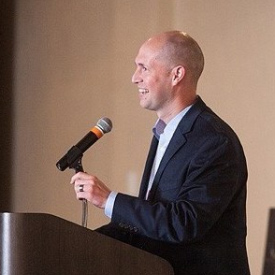Math People, Humanities People, and the Partially Free
There are, we generally believe, “math people” and “non-math people” – or to put a finer point on it, there are math people and there are “humanities people”. The math people enjoy equations, technology, pocket protectors, and comic book conventions. The humanities people attend Renaissance festivals, enjoy Shakespearean insults, despise popular books, and often lurk in coffeehouses. At least, those are a few of the stereotypes.
It seems that many people view such categories as naturally arising, determined only by the bent of the individual and his inclination towards a given subject or discipline. While that likely plays some role, it leaves us a bit puzzled over the great minds of history that seemed incapable of deciding whether they were math people or humanities people.
Consider:
- Pythagoras (c. 580-500 B.C.) was a mathematician, scientist, and philosopher.
- Plato (c. 428-348 B.C.) was such a stunning thinker that his dialogues are still used to teach philosophy, rhetoric, mathematics, logic, and ethics.
- Aristotle’s (384-322 B.C.) writings covered physics, poetry, theater, music, logic, rhetoric, linguistics, government, zoology, and more.
- St. Augustine (354-430 A.D.) was a rhetoric teacher, philosopher, and theologian.
- Dante Alighieri (1265-1321) served as a statesman and linguist, as well as a poet.
- Geoffrey Chaucer (1343-1400) though remembered for his Canterbury Tales, was also an accomplished alchemist and astronomer.
This list could be greatly extended, but hopefully you can see the point – the overspecialization and segmentation of learning found in modern education is an unfortunate and recent phenomenon.
Classical education, rightly understood, aims at the cultivation of wisdom and virtue by nourishing the soul on what is good, true, and beautiful. The seven liberal arts of grammar, logic, rhetoric (these three are referred to as the “trivium”), arithmetic, geometry, music, and astronomy (these last four are called the “quadrivium”) are the foundational tools for classical education. They are the indispensable “liberal arts”, so called because they build free people, individuals who know how to think, learn, and live well. The great minds listed above were recipients of such education.
The modern educational system, on the other hand, stresses specialization and compartmentalization because, to quote Karl Marx, modern education is “combined with industrial production”. That is, education today aims at the creation of workers or producers for the national economy, not the building of free people with full souls; the creation of specialists, not Aristotles.
The distinction, then, between “math people” and “humanities people” should be rejected by classical educators. It would be akin to being “partially free” or “partially enslaved”. This is not to say that students will not have some inclination towards one subject or another, but it does mean that we cannot abide the sharp distinctions and exclusions of modern education.
This all brings us back to a point of necessary introspection for the classical education community; namely, that we have allowed ourselves to develop into a circle of “humanities people”. Among too many, the trivium has become the definition of classical education, to the near exclusion of the mathematical arts (the quadrivium) and the natural sciences.
To make matters worse, a cyclical pattern can be created by such an approach. When students are taught by teachers who regard themselves as “humanities people” or “non-math people”, they will often regard themselves as the same.
This is not to say that there are not marvelous math teachers in classical schools; only that such teachers are left to fight an uphill battle. To be clear, the answer lies not in becoming “math people” or in neglecting the humanities, but in becoming liberal learners ourselves and modeling it for our students.
To be continued…

Brian Phillips
Dr. Brian Phillips serves as a pastor in Concord, NC, where he lives with his wife and their four children.











